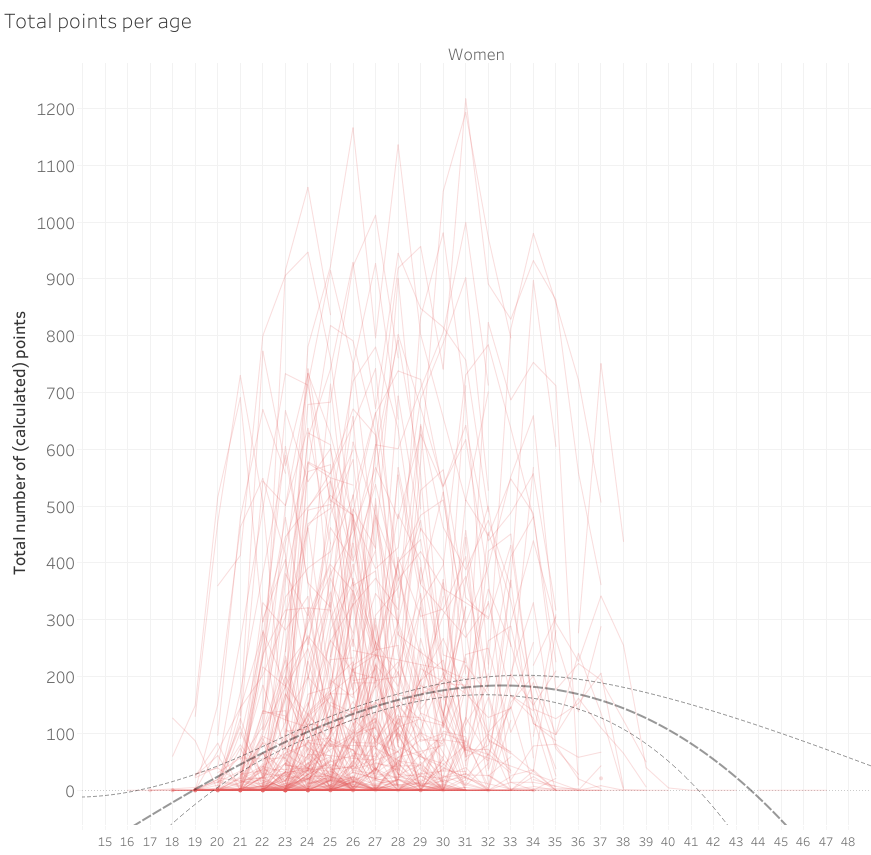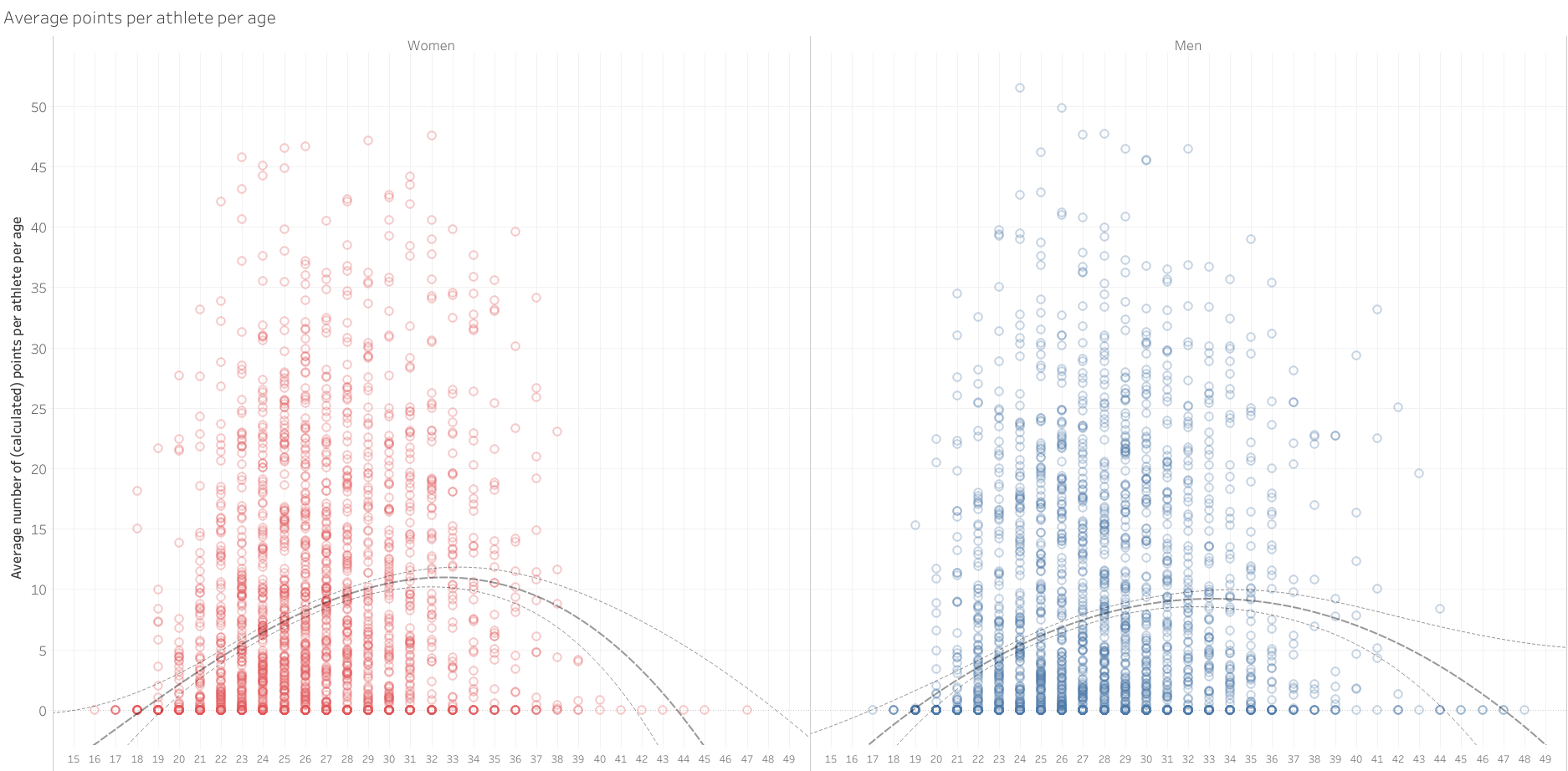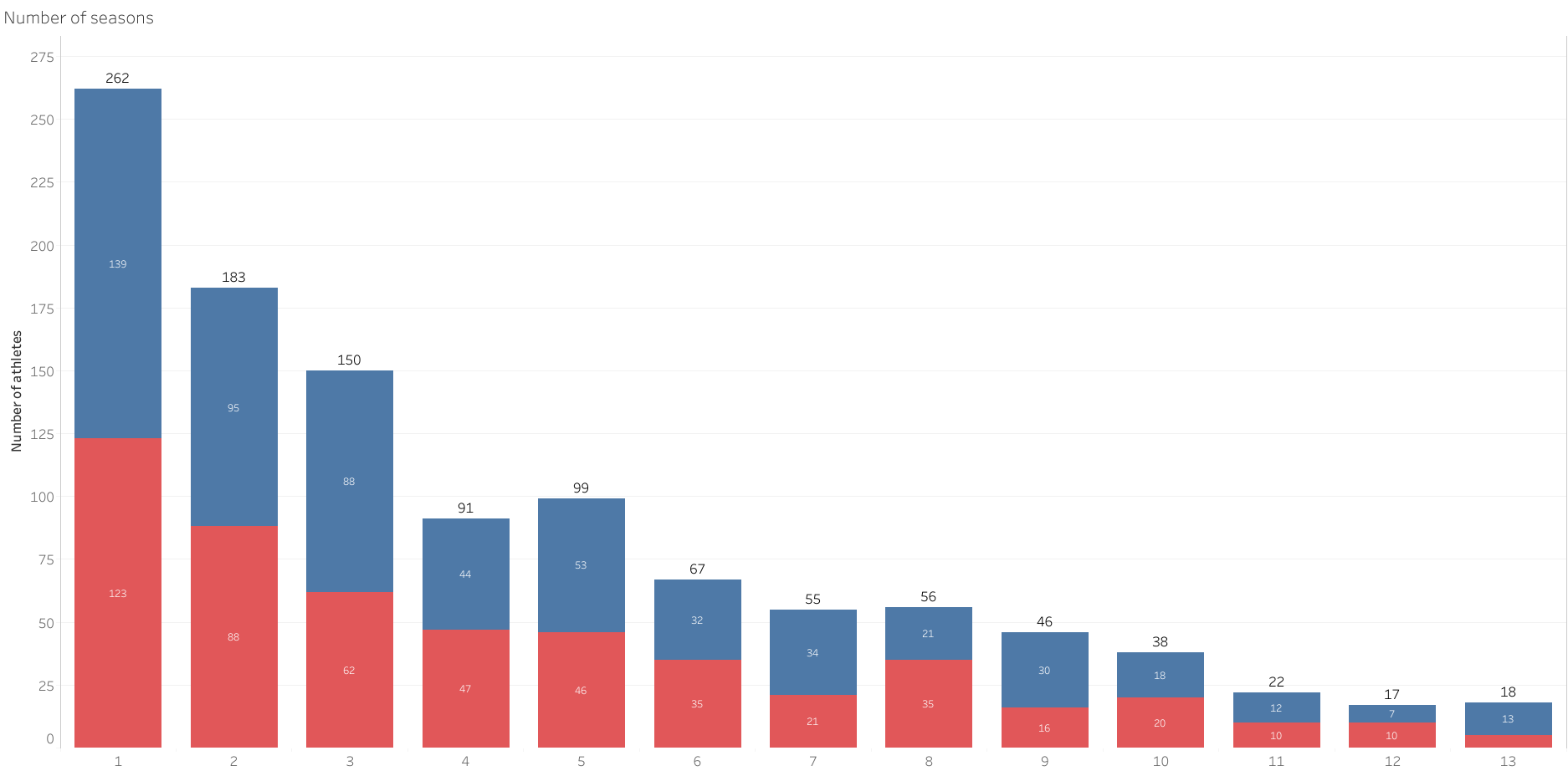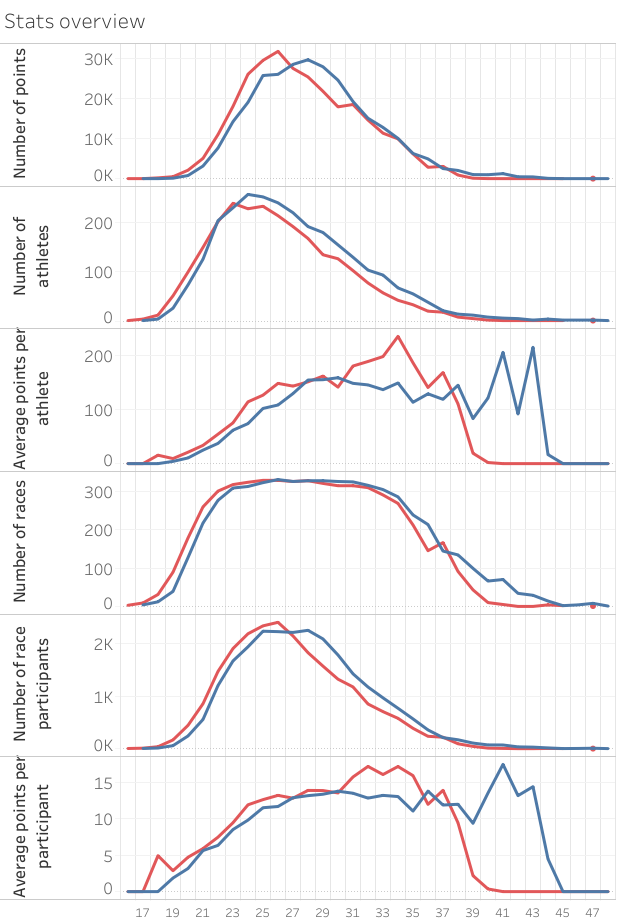Introduction
A couple of weeks ago, just as I was finishing up my analysis on the strength of biathlon nations, there was an article* on FasterSkier about Trends in Age and Ski Performance, for cross country skiers on the FIS World Cup. Curious about what this would look like for biathlon, I did some data digging to get race results as well as athlete birthdays to calculate their ages on race day. And then I got distracted and forgot about it. Luckily Matthias Ahrends, a super friendly biathlon coach from Canmore sent me an email about the article and asked if that was something I could look into for biathlon. Yes, I can! And I did.
* The original article, Analysis: Performance and Age, was written by Joran Elias, also known as StatisticalSkier
Data
The data for all the used non-team race results (World Cup level, including Olympic Games) and biathletes is from the 2009-2010 season up to and including the 2021-2022 season. This includes 1,102 athletes, 658 races, 47,458 race participants and 5,129 age-athlete combinations varying from 16 to 48 years old. Unfortunately, two athletes’ birthdays are incorrect in the data source (Romana Schrempf and Andreea Mezdrea) leading to incorrect age calculations, so they have been excluded.
The ages of athletes were calculated at the race level, based on their birthdays and the race date.
The biathlon performance is based on points that were calculated for all races, including Olympic ones, based on race rankings according to the current IBU rule book. For pursuit races, I calculated points based on the isolated race results (ignoring start time differences) as that gives a better indicator of performance.
Recent retroactive disqualifications by the IBU excluded the involved athletes from the rankings and moved up all lower-ranked athletes one position in the rankings.
Total points per age per athlete
Following the article, we first look at the total (calculated) points per athlete, one age at a time, which shows at what age athletes score the most points. The ages are shown from left to right, and the points from bottom to top.

We can see in the chart that women scored the highest number of points in the ages just after turning 30. One thing to consider is that typically the more successful athletes may be able to continue their successes a little longer, which could explain why the peak in total points is rather late. As we can see from the confidence band, the confidence of the trendline is lower as we get to higher ages, as it is based on fewer athletes.
The male athletes show a similar pattern, with the peak of most points around the age of 33. These are just the total number of points scored at a certain age for every athlete, not considering the total number of athletes and races in that age group. In case you are wondering about the single, fairly high line on the right of the chart? I call it the OEB effect. Ole Einar Bjørndalen affected the trendline quite substantially, specifically at higher ages.

Average points per athlete per age
The next chart shows the same data as above but averages the points per age per athlete. The darker areas indicate overlapping athlete-age combinations. The peak of the average scores happens around the early 30s again, with slightly higher averages by the women compared to the men. This is possibly caused by the larger number of male athletes, as shown a few charts down.

Number of seasons
Still following the structure of the mentioned cross country skiers article, I looked at the number of seasons the athletes participated in. When looking at this chart, please keep in mind that although it is still useful, it provides an incomplete picture. Although the data starts in the 2009-2010 season, not all athletes represented in the data started their first year in that season. The athletes that were active before the 2009-2010 season will be shown as if they started their first season in 2009-2010. For example, Ole Einar Bjørndalen raced from 1993 until 2018, an incredible 26 seasons. But he will show up in this chart as an athlete with nine seasons (2009-2010 until 2017-2018).

We can see that a large proportion of the dataset only races in a few seasons. The ones that race for ten seasons or more represent about 8.5% of the total dataset.
Stats overview

When combining all points from all athletes per age, we see that women score the most points at age 26, and men at 28.
The highest number of athletes peaks a bit earlier, at age 23 and 24 for women and men.
The average points per athlete per age follow a fairly smooth pattern until age 30, after which the impact of some major athletes disrupts it. Women athletes like Kaisa Makarainen, Andrea Henkel, Olga Zaitseva and Anastasiya Kuzmina still scored a lot of points at age 34, and Ole Einar Bjørndalen still produced 730 points at age 41, and 431 at age 43! Those point totals combined with very few athletes still racing at those ages leads to high point averages per athlete per age.
When we look at the number of races athletes participated in per age, we see a plateau of about 320 races up to age 32, 33 after which they start dropping quite quickly. The sudden uptake amongst the women at age 37 is thanks to athletes like Magdalena Gwizdon, Anna Carin Zidek, Andrea Henkel, Susan Dunklee and Selina Gasparin. Some of the most active men in their 40s are Ole Einar Bjørndalen, Ilmars Bricis, Daniel Mesotitsch, Halvard Hanevold and Oystein Slettemark.
The number of participants per age peaks around 25 and levels off pretty fast after that. When dividing the total points per age by the number of race participants we see quite similar trends to the average-points-per-athlete chart. Ole Einar Bjørndalen and Halvard Hanevold are mostly responsible for the high levels at 40 and up.
Concluding
I think the analysis above confirms the general assumption that biathletes typically perform at their strongest between the early and mid-30s, with some exceptional male athletes still performing at high levels in their 40s. Although that, with all respect to the other athletes, can be mostly contributed to the OEB effect.
Did you like this article, or do you have questions or comments? Please reach out on Twitter!
